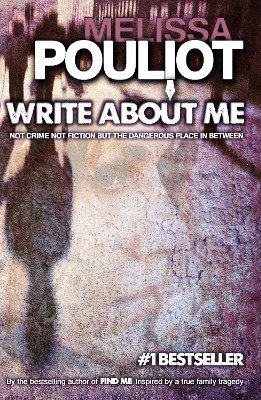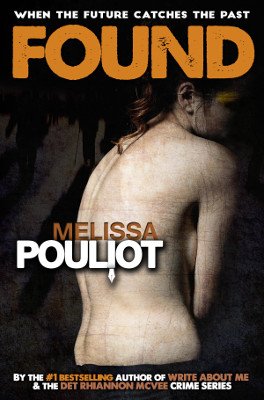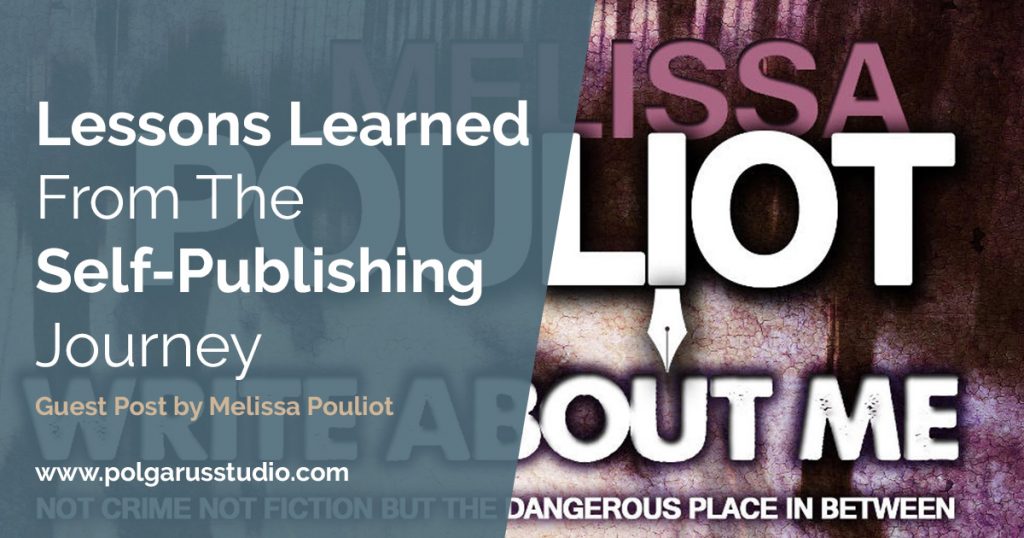 Our guest blogger is Australian crime writer Melissa Pouliot. Melissa’s books are inspired by the disappearance of her cousin Ursula Barwick and the publicity from her debut Amazon bestseller Write About Me, resulted in a new investigation into Ursula’s disappearance. As part of the release of her fifth novel FOUND, Melissa has offered to share a few of her book publishing experiences, some marketing tips and the things she’s learnt along the way:
Our guest blogger is Australian crime writer Melissa Pouliot. Melissa’s books are inspired by the disappearance of her cousin Ursula Barwick and the publicity from her debut Amazon bestseller Write About Me, resulted in a new investigation into Ursula’s disappearance. As part of the release of her fifth novel FOUND, Melissa has offered to share a few of her book publishing experiences, some marketing tips and the things she’s learnt along the way:
In 2013 I attended a writer’s workshop in my beautiful coastal hometown of Merimbula, Australia, and met an author who was at the forefront of self-publishing technology. She’d been publishing her books on Amazon for a long time and spoke my language. I’d just finished my first crime novel, Write About Me, and a literary agent had returned it to me with a blunt, sharp note attached: Not strong enough for the current fiction market.
Determined to see my book baby on the shelf I was exploring other options, and publishing it myself made perfect sense. With a journalism degree, my own media and marketing company, excellent contacts in the printing and design industry and a completed manuscript it would be easy. Right?
Well, easy might not be the most suitable word, but I did it. And within a month Write About Me reached #1 on Amazon, and to date, five years later, more than 100,000 copies have been downloaded in the world’s biggest e-book store and thousands of paperback copies are sitting on people’s bookshelves around the world.
I’ve just been through the publishing process for the fifth time and I admit that I expected to be all over it and to know exactly what I’m doing. I’m reading success stories every day and am so inspired to keep moving forward, but I still have much to learn.
The honest truth is that I’m still tripping up along the way, having to resubmit my book covers more than once to meet Create Space requirements, discovering typos and missed words in my novels after they’re published, am not marketing my books half as well as I market my media company clients, and continually feel that time is my enemy. Sound familiar?
It is well time to write a few things down and read them back to myself, over and over, as I work towards perfecting my craft.
 1. Know which genre your book fits into: it took me three years to work out that my novels are in the crime thriller genre. I tried to slot them into Young Adult but the language and adult themes, plus the general style mean that although young adults do enjoy them, they are not sitting neatly in the young adult category. I have also tried general fiction and women’s fiction and yes, they do fit into those categories but they are too broad and get lost. My Detective Rhiannon McVee series has some outback romance, but they don’t fit neatly into this category either because that theme is secondary. This all sounds so simple when I look back, and I feel like a bit of a goose, but often you are so close to your writing that you can’t see the forest for the trees. Once I realised I was an Australian female crime writer, and focussed on that genre, everything started to fall into place.
1. Know which genre your book fits into: it took me three years to work out that my novels are in the crime thriller genre. I tried to slot them into Young Adult but the language and adult themes, plus the general style mean that although young adults do enjoy them, they are not sitting neatly in the young adult category. I have also tried general fiction and women’s fiction and yes, they do fit into those categories but they are too broad and get lost. My Detective Rhiannon McVee series has some outback romance, but they don’t fit neatly into this category either because that theme is secondary. This all sounds so simple when I look back, and I feel like a bit of a goose, but often you are so close to your writing that you can’t see the forest for the trees. Once I realised I was an Australian female crime writer, and focussed on that genre, everything started to fall into place.
2. Focus on your strengths and outsource the rest: My strength is writing the book and project managing it right through to production. But to do this I need a team of people around me that can give me advice, provide their professional services an help me make my books the best they can be. I use a professional graphic designer for my book covers, book launch material and social media images. He also has a strong marketing sales background so he helps me step away from my tendency to try and fit too many words on the cover and strips it back to strong design, simple words and most importantly, building my author brand.
I also use Polgarus Studio for all my book formatting, something I did myself for my first two books before I found Jason and he changed my world. Although I do have strong desktop publishing skills and can follow the templates Amazon and Create Space supply, it takes me so long to format my books and little glitches such as page numbering do my head in. The time is far better spent on marketing, book launches, media interviews, keeping in touch with readers and the list of never-ending things that comes with publishing a book, and it has also taken a huge amount of stress off my shoulders.
3. Find a professional editor and proof-reader: Professional editing is something I’ve been doing for more than 22 years, but you need someone else to go over your book because I can tell you from experience – you’ll always miss something (or lots!). Like when I discovered, just as I was about to order my first major print run of FOUND for my first book launch event, that one of my characters changed his bike from a Harley Davidson to a Triumph. And this was after my book had been through a three-month editing process involving four editors. It is this kind of logic (or lack thereof) that just cannot be explained! The beauty of self-publishing is that you can update your book as many times as you like, so if you run out of time before launch and have to get your book online, you can still meet deadline then go back to the book when the pressure is off and fix up things that have been missed. I have just discovered that Polgarus Studio provide an editing and proof-reading service so I am now planning to have their professional eye over all five of my books and achieve a consistent style and make improvements to formatting, and I just know they’re going to find a typo or two.
4. Find a professional cover artwork designer with experience in book publishing: When I first published Write About Me I worked with a fabulous graphic designer and my artistic younger brother to design the most creative, out of this world, unique book cover on the market. Unfortunately none of us had any experience in book covers so we missed some vital aspects. My name was so small you had to hold the book up to your face to see it. The hand-drawn sign post and pavers have layer upon layer of meaning to me, but those meanings are not clear unless you get an opportunity to break it down and explain it to people. When your book thumbnail is sitting amongst millions of other books, obscure meanings don’t cut it. The cover needs to make your book jump off the screen or the shelf, and immediately reveal to the reader what it’s about. You also need to build up a recognition of your name, which is your most important marketing tool, so that it becomes recognisable in an instant when people see your covers. Because I am writing a series, I also needed to find a way to link my series books, so we have now introduced a new element to the front that show clearly which books are part of the series.
 5. Set aside one day a month to market your books: Many writers have full-time occupations and their novel writing is what they do in their ‘spare time’. They also have family commitments, busy lives and despite being passionate about their writing, it doesn’t always pay off enough financially to give up their day jobs for. And let’s be honest, the writing, editing and publishing process can be so exhausting that by the time you publish your book you are over it. Also, many of us write so prolifically that by the time our books are published we are well on our way to writing the next one. These things combined mean we often sit our books on the shelves (real and virtual) and wait for them to sell. But books are no different to any other product, if you don’t shout them from the rooftops or have others shouting them from the rooftops, you are never going to reach your readers. You can listen to all the podcasts or read blogs from highly successful authors but how do you apply that yourself? One of the US authors in my mentor group, who has established herself in a short three years as a top ranking legal thriller author on Amazon, shared her method with me. She takes one day a month out of her life and spends that full day on book marketing. If you spend one day a month researching, writing blogs, doing paid ads, organising KDP Select promotions, scheduling Facebook posts, connecting with special interest groups who might be able to help with your book sales, building your newsletter list and updating your author website it won’t take be long before you start kicking goals. Prepare a spreadsheet so you can track the success of your marketing spend for the previous month, which will help you decide what you want to do next month. When you spend five minutes here, 20 minutes there and two seconds somewhere else, it gets completely overwhelming and you just go around and around in circles.
5. Set aside one day a month to market your books: Many writers have full-time occupations and their novel writing is what they do in their ‘spare time’. They also have family commitments, busy lives and despite being passionate about their writing, it doesn’t always pay off enough financially to give up their day jobs for. And let’s be honest, the writing, editing and publishing process can be so exhausting that by the time you publish your book you are over it. Also, many of us write so prolifically that by the time our books are published we are well on our way to writing the next one. These things combined mean we often sit our books on the shelves (real and virtual) and wait for them to sell. But books are no different to any other product, if you don’t shout them from the rooftops or have others shouting them from the rooftops, you are never going to reach your readers. You can listen to all the podcasts or read blogs from highly successful authors but how do you apply that yourself? One of the US authors in my mentor group, who has established herself in a short three years as a top ranking legal thriller author on Amazon, shared her method with me. She takes one day a month out of her life and spends that full day on book marketing. If you spend one day a month researching, writing blogs, doing paid ads, organising KDP Select promotions, scheduling Facebook posts, connecting with special interest groups who might be able to help with your book sales, building your newsletter list and updating your author website it won’t take be long before you start kicking goals. Prepare a spreadsheet so you can track the success of your marketing spend for the previous month, which will help you decide what you want to do next month. When you spend five minutes here, 20 minutes there and two seconds somewhere else, it gets completely overwhelming and you just go around and around in circles.
Keep writing: You all know the definition of overnight success don’t you? I will never forget reading an article with renowned Australian chef Maggie Beer where she says her ‘overnight success’ only took 20 years. Of course there are plenty of overnight success stories, but how do you establish your reputation, your brand, a loyal readership who will buy every new book you release? By being consistent, reliable and releasing new books. I read a blog early in my crime writing career which suggested you write for 10 minutes a day. As soon as I started doing that it opened up a whole new writing space for me. No matter how busy we are, we can all spare 10 minutes to write down a few words, can’t we? Some days that 10 minutes turns into 20, maybe 30 or maybe even a whole hour. It doesn’t matter what time of day you steal these 10 minutes, and I’ve found it can be as soon as I wake up, when I get back from a bike ride feeling inspired with a whole new character in my head, or while dinner is cooking and the kids are in the shower and not interrupting me.
Most importantly, do what you love and love what you do!
You can find Melissa’s books over here – if you enjoy crime stories, you’re sure to love them!
